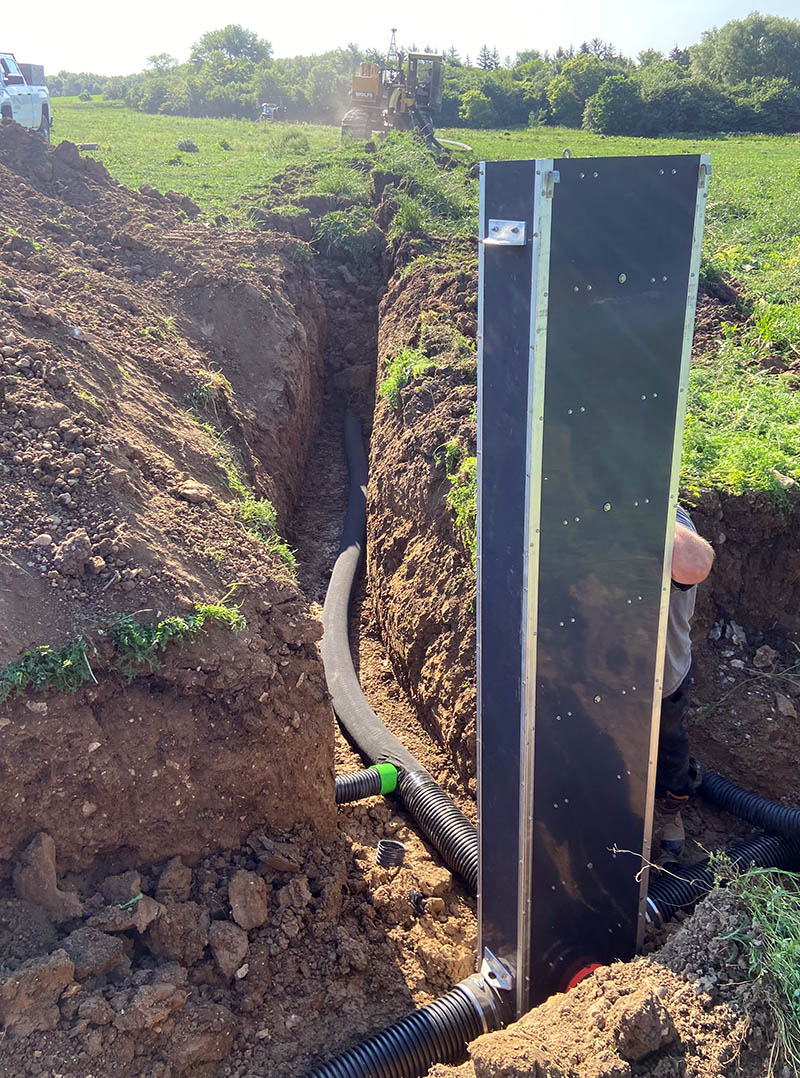Saturated Buffer to Protect Water Quality (UTRCA Weekly, September 17, 2021)
One of the Upper Thames River Conservation Authority’s (UTRCA) strategic Environmental Targets is to establish and restore 1,500 hectares of natural vegetation cover, windbreaks, and buffers by 2037. To achieve this, staff work with landowners to target marginal lands, stream buffers, vulnerable farm fields, and other areas.
Earlier this summer, the UTRCA installed a saturated buffer to protect water quality, on a property near St. Marys. The project is funded by the Canada-Ontario Agreement through the Ministry of Agriculture, Food and Rural Affairs.
Staff chose this UTRCA-owned site for the project because agricultural drainage tile had recently been installed on a neighbouring farm. The tile crossed the UTRCA property, providing the opportunity to intercept it and install the buffer. Staff will monitor the buffer to determine how effective it is in removing nutrients from the water in the tile.
A grass bufferstrip is not new to agricultural drains in Ontario. It protects stream banks from erosion and removes sediment and nutrients from water running from agricultural fields into a stream. A saturated buffer, however, is relatively new to Ontario’s drainage system.
To create a saturated buffer, the existing underground tile drain line that is carrying water from the field into the stream is intercepted and a water level control structure is installed. The control structure has a series of stop-gates that can be raised or lowered, thus redirecting the water into a second tile, which is installed parallel to the stream (perpendicular to the main outlet tile). This second tile extends 150-200 metres at a very low grade and has a filter sock on it. Water flowing from the field tiles is redirected into the buffer tile, which becomes “saturated.” The water is thus able to move into the surrounding subsoil rather than flowing directly into the watercourse. Through plant uptake, denitrification, and microbial activity, nutrients are removed from the tile water, thereby reducing nutrients entering the drain.

In the image above, an Agri Drain Inline Water Level Control Structure is installed along this field tile outlet to intercept runoff and redirect it into a second tile, being installed by the drainage plow in the distance.

